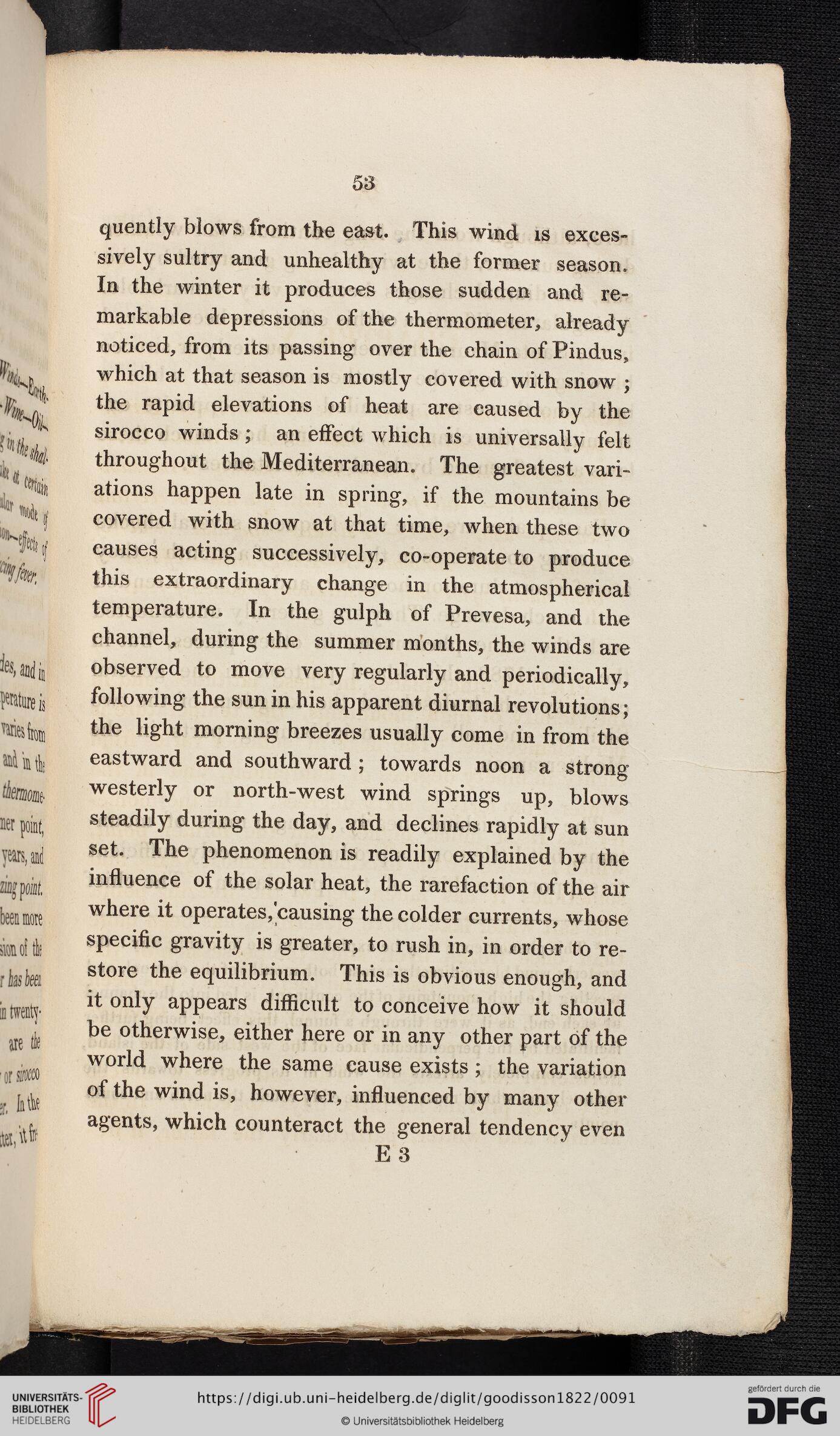53
rw.
Sunlit
Wire is
Wfem
thenaomt
Mr point,
years.aad
nug point.
been more
smith
jbasbea
in twenty-
are tie
■or sirocco
y, In the
quently blows from the east. This wind is exces-
sively sultry and unhealthy at the former season.
In the winter it produces those sudden and re-
markable depressions of the thermometer, already
noticed, from its passing over the chain of Pindus,
which at that season is mostly covered with snow ;
the rapid elevations of heat are caused by the
sirocco winds ; an effect which is universally felt
throughout the Mediterranean. The greatest vari-
ations happen late in spring, if the mountains be
covered with snow at that time, when these two
causes acting successively, co-operate to produce
this extraordinary change in the atmospherical
temperature. In the gulph of Prevesa, and the
channel, during the summer months, the winds are
observed to move very regularly and periodically,
following the sun in his apparent diurnal revolutions;
the light morning breezes usually come in from the
eastward and southward ; towards noon a strong
westerly or north-west wind springs up, blows
steadily during the day, and declines rapidly at sun
set. The phenomenon is readily explained by the
influence of the solar heat, the rarefaction of the air
where it operates,'causing the colder currents, whose
specific gravity is greater, to rush in, in order to re-
store the equilibrium. This is obvious enough, and
it only appears difficult to conceive how it should
be otherwise, either here or in any other part of the
world where the same cause exists ; the variation
of the wind is, however, influenced by many other
agents, which counteract the general tendency even
E 3
rw.
Sunlit
Wire is
Wfem
thenaomt
Mr point,
years.aad
nug point.
been more
smith
jbasbea
in twenty-
are tie
■or sirocco
y, In the
quently blows from the east. This wind is exces-
sively sultry and unhealthy at the former season.
In the winter it produces those sudden and re-
markable depressions of the thermometer, already
noticed, from its passing over the chain of Pindus,
which at that season is mostly covered with snow ;
the rapid elevations of heat are caused by the
sirocco winds ; an effect which is universally felt
throughout the Mediterranean. The greatest vari-
ations happen late in spring, if the mountains be
covered with snow at that time, when these two
causes acting successively, co-operate to produce
this extraordinary change in the atmospherical
temperature. In the gulph of Prevesa, and the
channel, during the summer months, the winds are
observed to move very regularly and periodically,
following the sun in his apparent diurnal revolutions;
the light morning breezes usually come in from the
eastward and southward ; towards noon a strong
westerly or north-west wind springs up, blows
steadily during the day, and declines rapidly at sun
set. The phenomenon is readily explained by the
influence of the solar heat, the rarefaction of the air
where it operates,'causing the colder currents, whose
specific gravity is greater, to rush in, in order to re-
store the equilibrium. This is obvious enough, and
it only appears difficult to conceive how it should
be otherwise, either here or in any other part of the
world where the same cause exists ; the variation
of the wind is, however, influenced by many other
agents, which counteract the general tendency even
E 3




